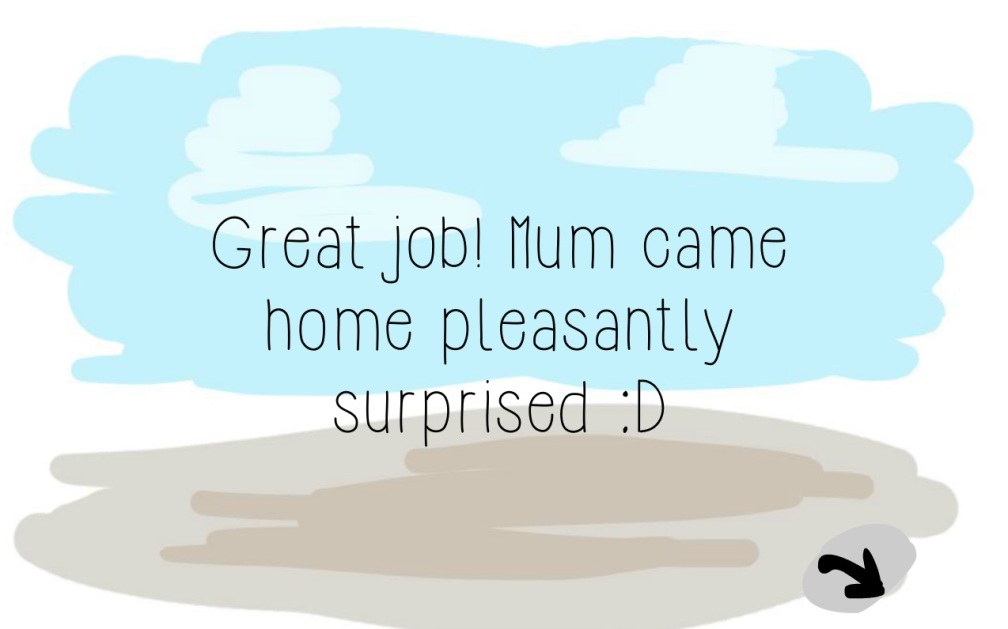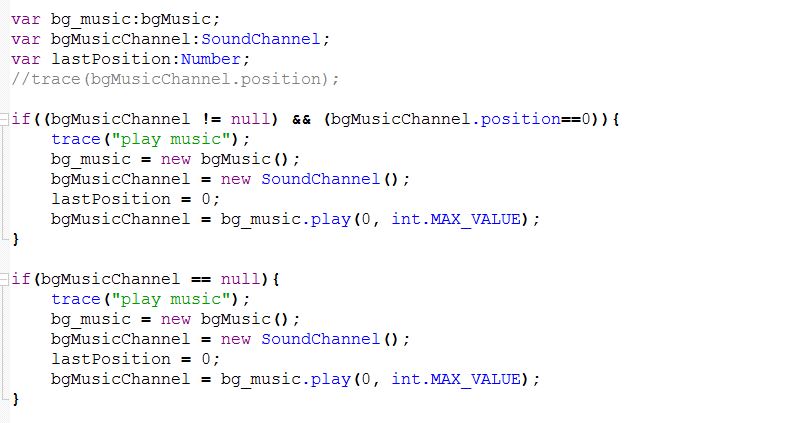Tydee has been designed and produced as a mobile game playable for Android. In the project planning phase, I decided to make a mobile game application as “mobile gaming has become an essential market targeted by competitors in associated industries” (Yu-Shan et. al, 2016). The artefact that I have produced is somewhat a cross between a game and a short interactive story. Players are required to make actions, complete tasks within the time frame (which is the challenging game part of it) and the speed of their actions will determine the outcome of the “story”, whether or not Mum comes home happy.
The project is inspired by personal experience. I used to find myself rushing with adrenaline, quickly getting chores done when I hear my mother’s car drive into the porch. I decided to turn this into a fun game. The very phrase “it’s just a game” implies that playing a game is a form of practice for a real-life challenge (Koster, 2005). If games are essentially models of reality, then the things that games teach us must reflect on reality.
Thinking about game design, I looked at existing artefacts on touch screen devices. The two that are taken as inspiration are the Nintendo DS game Iron Chef America: Supreme Cuisine and the Dumb Ways To Die Mobile Game. I spent a great deal of time on every aspect of this project from the visual illustration, to programming, to audio implementation. I kept the illustrations simple, and made sure that every interaction and button within the game works and gives players a good experience. Unger (2012) states that in mobile game design, the vision statement of the design tends to be simpler – with more focus on gameplay rather than world-building or storyline. This is not implying that story and world-building are not important in mobile games, but the very nature of mobile games means that the player will not be as forgiving of issues with gameplay mechanics.
According to Tekinbas and Zimmerman (2003), creating meaningful play is the goal of successful game design. Meaningful play in a game occurs from the relationship between player action and system outcome; it is the process whereby a player takes action within the designed system of a game and the system responds to the action (ibid.). The actions required in the game Tydee are basically completing all the tasks and the system then responds according to whether the player achieves this before or after the time runs out.
With guidance and support from my supervisor, as well as the opportunity to scout the internet for tutorials, I have gained a lot of knew knowledge and skills in the process of making this project a reality. Applying interactions that I’d never worked on before, it allowed me to explore and discover what else is possible in game design and development. I believe I have successfully realised the ambitions I had at the early stages of planning the project. Everything works exactly as how I had imagined and I am quite pleased with the end result. The main objective for making the game is fundamentally to give players an enjoyable experience. This was observed during the user-testing stage when majority of the players that tested the game expressed their joy while playing.
However, looking at Koster’s (2005) list of ways boredom might strike, killing the pleasurable experience that games are supposed to provide, I realise that Tydee holds the tendency to do so. The ones relevant and possible for my game are when the player thinks the game is too hard, because they fail to see any patterns (i.e. don’t know what to do, where to tap), or on the other hand, when they master everything in the pattern, exhausted the fun, consumed it all and have nothing else to look forward to.
References:
Gamefaqs (2016) Iron Chef America: Supreme Cuisine [online] Gamefaqs.com. Available at: http://www.gamefaqs.com/ds/944949-iron-chef-america-supreme-cuisine [Accessed 26. Jun. 2016].
Koster, R. (2005). A theory of fun for game design. Scottsdale, AZ: Paraglyph Press.
Tekinbaş, K. and Zimmerman, E. (2003). Rules of play. Cambridge, Mass.: MIT Press.
Unger, K. (2012). Game development essentials. Clifton Park, N.Y.: Delmar.
Wilks, P. (2013) Must Play Game – Dumb Ways To Die. [online] Bluestacks.com. Available at: http://www.bluestacks.com/blog/app-reviews/archive/dumb-ways-to-die.html [Accessed 26 Jun. 2016].
Yu-Shan, S., Wei-Lun, C., Chin-Tarn, J.L., Han-Chao, C. (2016). The effect of flow experience on player loyalty in mobile game application. [online] Sciencedirect.com. Available at: http://www.sciencedirect.com/science/article/pii/S0747563216303764 [Accessed 26 Jun. 2016].






















